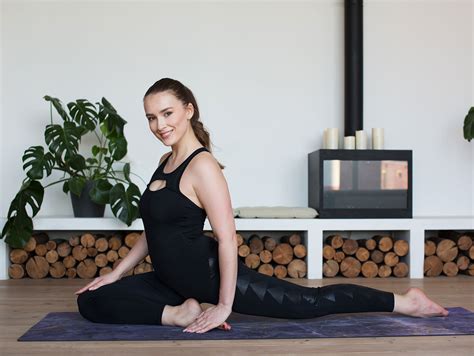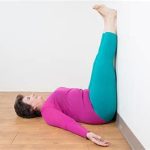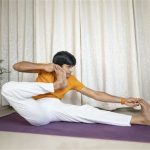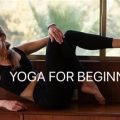Accessible Yoga: Techniques and Tips for Practicing Yoga With Limited Mobility
Yoga is often regarded as a transformative practice that enhances both physical and mental well-being. However, for individuals with limited mobility, traditional yoga poses may seem daunting or out of reach. Fortunately, yoga can be adapted to accommodate a wide range of abilities and limitations, ensuring that everyone can experience the benefits of this ancient practice. This article explores how people with limited mobility can effectively practice yoga, offering practical applications, historical context, ethical considerations, and future research implications.
Introduction
Yoga has been practiced for thousands of years, promoting balance, flexibility, strength, and mindfulness. However, the mainstream portrayal of yoga often emphasizes physically demanding poses, leaving out individuals who might have difficulty moving freely due to injuries, chronic illnesses, or disabilities. In this guide, we break down strategies for making yoga accessible to everyone, focusing on practices that accommodate varying levels of mobility. By adapting poses, using props, and modifying expectations, individuals with physical limitations can engage with yoga on their terms, enhancing their quality of life while staying within safe physical boundaries.
Key Concepts
- Chair Yoga: A form of yoga that uses a chair for support. It allows individuals to practice poses while seated or using the chair as a stabilizer, ensuring safety and accessibility.
- Adaptive Poses: Traditional yoga poses modified for individuals with mobility challenges. These can involve the use of props like blocks, straps, or bolsters to maintain alignment and minimize strain.
- Breathwork (Pranayama): A crucial element of yoga, focusing on controlling the breath to enhance relaxation, focus, and physical well-being. Breathwork can be practiced by anyone, regardless of physical limitations.
- Mindfulness Meditation: This involves focusing attention and becoming aware of the present moment. It is especially beneficial for individuals unable to perform physical poses, helping them cultivate mental clarity and emotional balance.
Historical Context
Yoga’s origins date back to ancient India, where it was practiced as a holistic system for physical, mental, and spiritual well-being. In its original form, yoga encompassed much more than physical poses (asanas), focusing on breath control, meditation, and ethical principles. Historically, yoga was tailored to individual needs, including physical limitations, although contemporary yoga practices have become more standardized and often emphasize physical prowess.
Despite this shift, many of the ancient teachings can be adapted for people with limited mobility. The original yoga sutras emphasized inclusivity, mindfulness, and adaptability—principles that are highly relevant today as modern practitioners strive to make yoga more accessible.
Current State Analysis
In recent years, there has been a growing movement toward making yoga more inclusive. Chair yoga, restorative yoga, and gentle yoga are now widely offered in studios, gyms, and online platforms. However, misconceptions persist, including the belief that yoga is only for the physically fit. This stereotype can prevent individuals with mobility challenges from exploring yoga as a viable option for improving their well-being.
Despite the increased availability of adaptive yoga programs, there is still a need for more widespread accessibility. Many yoga instructors lack specific training in how to teach students with physical limitations, which can inadvertently exclude those who would benefit most from the practice.
Practical Applications
To make yoga accessible to individuals with limited mobility, several practical strategies can be employed:
- Chair Yoga Classes: These classes allow individuals to perform modified poses while seated. This ensures stability and reduces the risk of injury. Popular poses like seated cat-cow stretches, chair warrior poses, and seated forward bends are easy to adapt.
- Props: Blocks, straps, bolsters, and blankets can be used to provide additional support during poses, making it easier to achieve proper alignment without overstraining the body.
- Gentle Yoga: Offering slower-paced classes with less physically demanding poses can cater to people with mobility challenges. Movements are more fluid and less intense, focusing on breath and mindful transitions.
- Online Resources: Digital platforms that offer adaptive yoga routines specifically for people with physical challenges have expanded access for home-based practitioners.
Case Studies
| Case Study | Adaptations Used | Outcome |
|---|---|---|
| John’s Recovery from a Stroke | Chair yoga, use of straps, guided breathwork | Improved flexibility, mental clarity, reduced stress |
| Maria’s Chronic Pain Management | Gentle yoga, bolsters for support, breath meditation | Reduced chronic pain, increased range of motion |
| Ravi’s Multiple Sclerosis (MS) Practice | Adaptive yoga, restorative poses, mindfulness meditation | Improved body awareness, enhanced emotional resilience |
Stakeholder Analysis
Several stakeholders play a role in making yoga accessible to individuals with limited mobility:
- Yoga Instructors: Need specialized training to adapt poses and create inclusive classes.
- Healthcare Providers: Can recommend yoga as part of a holistic approach to managing chronic conditions or rehabilitating from injury.
- Yoga Studios and Gyms: Must create welcoming environments and offer adaptive classes that cater to a wide range of abilities.
- Technology Platforms: Provide virtual access to adaptive yoga classes, ensuring that individuals who cannot attend in person can still participate.
Implementation Guidelines
For instructors and practitioners looking to implement accessible yoga, the following guidelines can ensure success:
- Instructor Training: Yoga teachers should receive specialized training on adaptive poses and safety precautions when working with individuals with mobility challenges.
- Use of Props: Instructors should introduce props early in class to familiarize students with their use, encouraging adjustments based on individual needs.
- Progressive Pacing: Start with simple poses and breathing exercises, gradually progressing as students become more comfortable and confident.
- Inclusive Language: Avoid language that implies physical ability as a measure of success. Instead, encourage mindfulness, personal growth, and self-compassion.
Ethical Considerations
While offering yoga for individuals with limited mobility, several ethical considerations must be addressed:
- Inclusion vs. Exclusion: Yoga should be a practice for everyone, regardless of physical ability. Instructors must ensure their classes are welcoming to all.
- Safety: Modifications should prioritize safety, avoiding poses that could exacerbate injuries or cause harm.
- Respecting Limits: Yoga teachers should encourage students to listen to their bodies, avoid pushing beyond their limits, and honor their unique experiences and capabilities.
Limitations and Future Research
Despite the benefits of adaptive yoga, there are limitations that need to be addressed through future research:
- Limited Instructor Training: Not all yoga instructors are trained to work with individuals who have limited mobility. Developing standardized training programs would help address this gap.
- Need for More Research: Although anecdotal evidence supports the benefits of yoga for individuals with mobility challenges, more formal research is needed to validate these findings and refine adaptive practices.
- Technology Barriers: While online resources are growing, some individuals may lack access to the necessary technology or internet connections to participate in virtual classes.
Expert Commentary
As the popularity of yoga continues to grow, so too does the need for inclusivity within the practice. Yoga, at its core, is about unity—between mind, body, and spirit—and there is no reason why physical limitations should prevent anyone from experiencing its benefits. The growing field of adaptive yoga represents a significant shift in how we approach wellness, emphasizing accessibility and personalization. With the right support, yoga can be a transformative practice for all, regardless of mobility limitations.








